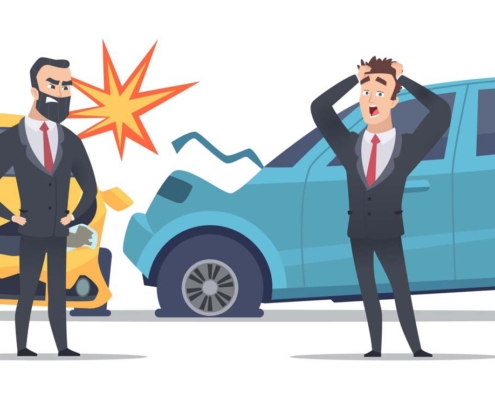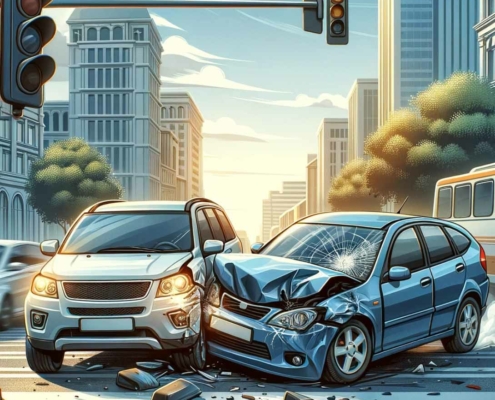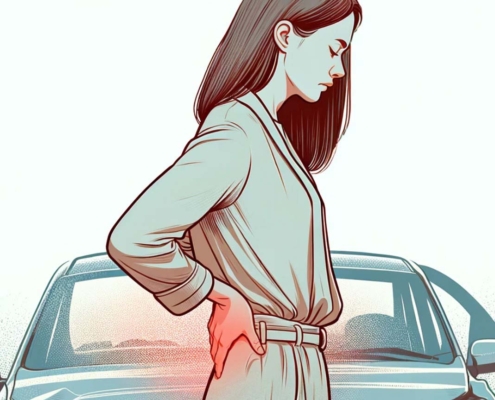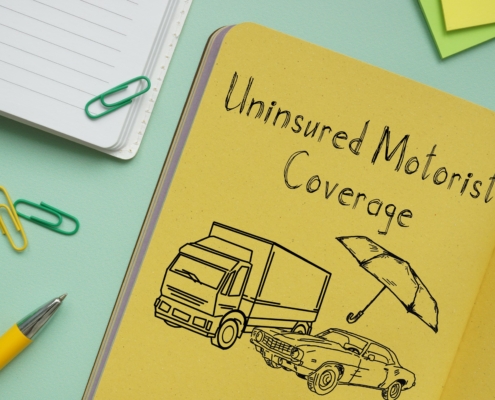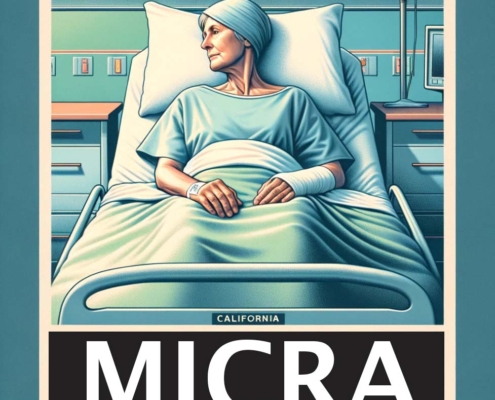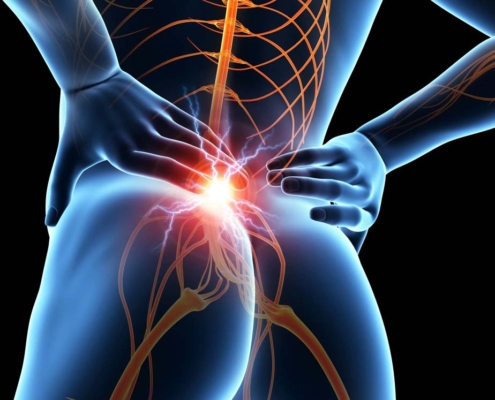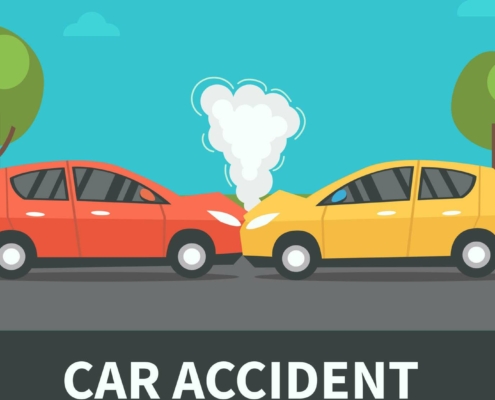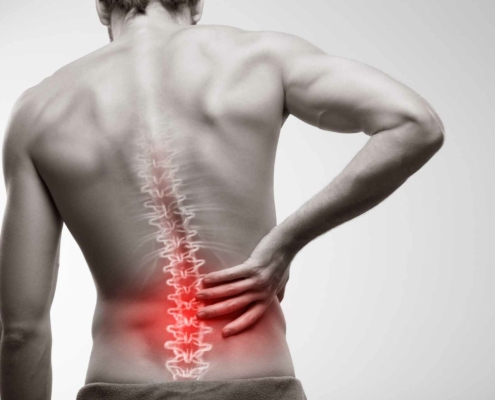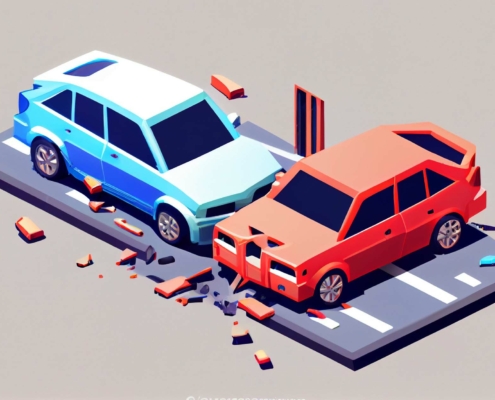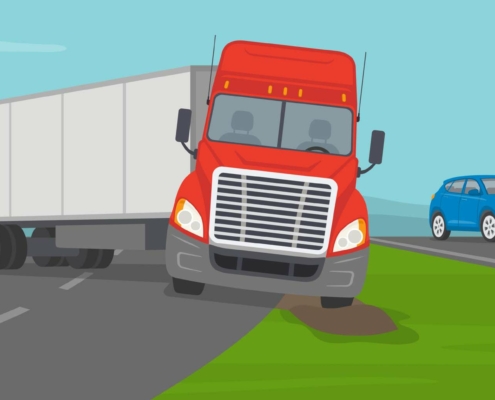How Much Money for a Back Injury in a Car Crash Case?
The typical settlement amount for a back injury in a car crash lawsuit ranges from $12,000 to $500,000. That said, there are certain cases that result in settlements worth millions. The reason for this is that back injuries range in severity. A soft tissue injury will get a much lower settlement than a spinal injury. For this reason, the typical settlement amount is not a very useful number – it all depends on the kind of back injury a victim suffers from. Please contact our spinal cord injury lawyer for a free consultation on the value of your back injury after a car accident.
What Is the Normal Settlement for Vehicle Crash Back Injury Cases?
The justice system may offer an individual compensation to assist with pain, expenses, and lifestyle alterations that come with a serious back injury. The average award for a neck or back injury with surgery is about $260,000. That said, a back injury settlement depends on the kind of injury.
Injuries to the Spinal Cord
Injuries to the spinal cord are the most severe kind of injury. This means that the spine has suffered dislocated or fractured vertebrae. With proper insurance, the typical settlement for a spinal injury car crash lawsuit is generally in the millions.
Vertebral Disc Injuries
Disc injuries are the second-most serious. In general, herniated disc cases typically get greater settlements than bulging or ruptured discs. Certain herniated disc instances get settlements in the millions. Others, which cause less trouble for the victim, do not have as high settlements. The compensation payouts depend on the following:
- If there is previous injury to that region of the spine
- What the CT/MRI scan reveals
- The symptoms of the spine injury and the ways in which the victim’s life is affected
- The manner of treatment
Herniated disc injuries that necessitate surgery often result in the highest settlements. This is a serious surgery with risks, such as infection, spinal fluid leak, thrombophlebitis, and even death. That said, surgery can offer greater relief than more cautious treatment. The settlement value for an injury requiring back surgery will usually be greater than for a case lacking surgery.
Injuries to the lumbar disc from accidents typically improve in ninety percent of individuals without surgery, rather using steroids or other conservative treatments.
Epidural Steroid Injections Without Surgery
For victims who end up using epidural steroid injections, the compensation can be very high. Jurors tend to understand how the need for injections indicates a severe and painful back injury. That said, insurance companies do not consider non-surgery cases to be serious, even when injections are needed. This is the reason that non-surgery lower back injury lawsuits tend to go to trial.
Whiplash and Soft Tissue Injuries
The lowest settlement amounts are reserved for back injuries involving soft tissue damage that cannot be proven by medical tests. This kind of injury includes whiplash. Settlement payouts for these cases will rely on the following factors:
- If there are existing injuries to the back
- The believability of the plaintiff and the seriousness of the injury
- The insurance firm involved
- The case’s jurisdiction
- How serious the impact was
In a personal injury case, the individual’s credibility is essential. This is especially the case when it comes to back injuries. Because back injuries are a common complaint, juries view these complaints with skepticism. Also, with back problems, the symptoms and injuries often don’t correlate with the radiological evidence.
How Do Pre-Existing Conditions Affect Settlements for Back Injuries?
The most difficult cases related to back injuries involve pre-existing conditions, such as spondylosis and spinal stenosis. Herniated discs can also be problematic because many individuals have pre-existing disc injuries without even knowing it. Insurance companies may use MRIs to posit that a victim’s back was already experiencing problems before the accident occurred.
That said, even with prior injuries, an individual can still get a favorable settlement or jury verdict. The bottom line is that if an individual did not have discomfort prior to an accident and they now have discomfort after the accident, then the crash was likely the reason for the pain.
To win such a case, it is important that an individual have a lawyer and a doctor who can explain the discrepancy between the problems prior to the accident and the individual’s current condition. However, if the accident made little difference to one’s condition, then the probability of getting a fair settlement is low.
What Affects the Settlement Amount in Back Injury Cases?
The main factor that determines a settlement amount for a back injury car crash case is the seriousness of the victim’s back injury. Car accident back problems can be minor in nature, such as back sprains, or they can be serious enough to cause permanent disability (vertebral fractures).
The more serious an injury is, and the more medical care it requires, the bigger the settlement will be. Another aspect that affects the amount of a back injury settlement is the age of the victim. Younger victims tend to get better settlements because they are less likely to have pre-existing back problems.
How Do Car Accidents Cause Back Injuries?
The spine is composed of a collection of nerves which, together with the brain, make up the body’s nervous system. The spine travels from the skull to the pelvis and is about a foot and a half in length. Vertebrae, a stack of circular bones, protect the spine from damage.
The spine’s vertebrae are divided into four separate regions:
- Cervical (C1-C7) – The cervical part of the spine makes up the top seven vertebrae that compose the neck. When victims of crashes endure a whiplash injury, it is usually one or more of the cervical bones that are impacted.
- Thoracic (T1-T12) – The thoracic part of the spine makes up the twelve vertebrae of the upper back. Usually, blunt force trauma causes injuries to the upper and mid-back, which is common in severe car or motorcycle accidents. Thoracic spine injuries are normally serious because this part of the spine connects the ribs and chest, both of which protect the body’s vital organs.
- Lumbar (L1-L5) – The lower back is known as the lumbar region of the spine and is composed of five vertebrae. These are the largest and strongest bones in the spine, which offer the support and stability needed to move.
- Sacral (S1-S5) – The tailbone, composed of the coccyx and the sacrum, is made up of nine vertebrae at the base of the spine. These are fused to form one solid bone structure. Broken tailbones are a common injury in car accidents because of the major outside forces that are involved. Injuries to the tailbone can cause radiating pain that requires a long recovery period.
Thirty-one nerve pairs in the spine shoot off from the spinal cord, and their job is to receive and send signals that manage sensory perception, movement, and unconscious functions of the body. These are the links that bond the body’s nerves to other regions of the body.
Spinal injuries can cause loss of mobility, function, and sensation. The spine does not have to be cut to cause a serious injury to the spinal cord. Most times, the spinal cord remains intact but surrounding damage leads to pain and impaired or lost function. Approximately 260,000 individuals in America suffer from an injury to their spinal cord.
Other injuries to the back include pinched nerves, spinal stenosis, and ruptured discs. These are not as serious, but they can still cause pain, numbness, and weakness.
Car crashes are the top cause of back injuries in the U.S., making up 38% of cases. Rollover crashes are not common, but they are very likely to result in spinal cord damage. More usual kinds of crashes include head-on, rear-end, side-impact, and sideswipe. Typical injuries include damage to the discs between vertebrae, pinched nerves, and strains.
What Are Symptoms of a Car Accident Spine Injury?
After a car crash, it is common to feel sore, which can make it hard to determine which pain is related to the back specifically. It can be helpful to know what to expect after an accident in order to decide what to do next.
Because the spine includes the large area from the neck to the pelvis, pain can radiate to many different regions of the body. After a car accident, back pain may come from inflammation, fractures, and compressed nerves. The symptoms may be uncomfortable but manageable, or they may make everyday tasks impossible to perform.
After a car accident, one may experience any of the following medical issues:
- Muscle spasms – A muscle may repeatedly twitch, feel like a hard knot, or feel tender when touched. Muscle spasms vary when it comes to pain; they may be mild or debilitating.
- Burning pain – A harsh pain may move down one’s back and buttocks through the back of both legs. This can be a mild pain that goes away, or it can be a burning discomfort that lasts for days.
- Stiffness – An individual may not feet as flexible after a car accident due to their muscles tensing up. This kind of stiffness may go away after some stretching, or it may be continuous.
- Sharp pain – Changing positions, such as sitting up or standing, can cause a sharp pain in one’s back.
- Pain when walking or standing – Sometimes, physical activity in itself is painful, causing a throbbing sensation or mild pain when one does daily tasks.
- Tingling or numbness – Because the spinal cord connects the body’s limbs, tense muscles can pinch nerves, which may lead to feelings of tingling or numbness in the hands, feet, legs, or arms.
However, if an individual is experiencing headaches, disorientation, or dizziness after a car collision, then it is likely he or she has endured damage to their cervical vertebrae from whiplash.
It is important that an individual make note of their symptoms, including tracking what activities worsen the pain and how often the discomfort occurs.
What Are Different Kinds of Back Injuries Caused by Car Accidents?
The spinal column extends from the base of the skull to the tip of the tailbone. This column is composed of 33 vertebrae, all of which send neural signals to the brain and to the rest of the body. A car accident can easily injure a part of the spinal cord or column, leading to issues with the rest of the body.
A car accident can result in a number of different back injuries, though many problems result from whiplash. Whiplash injures the soft tissue and can cause many other serious spinal issues. These injuries include sprains, strains, herniated discs, and fractures. Also, if an individual suffered previous problems such as spinal stenosis, then a car collision can worsen the preexisting condition.
The symptoms of a back injury after a car crash can vary greatly, and an individual may suffer from one or more types of injury. It can also be difficult to diagnose the exact cause of pain without running tests. This is because different injuries may present similar symptoms.
Whiplash
Whiplash is a very common injury that happens because of car accidents. It consists of stiffness and pain caused by the neck’s sudden movement. Even in accidents at low speed, there can be significant pain and suffering. Symptoms of whiplash include headaches, poor concentration, trouble sleeping, tinnitus, vision problems, depression, weakness, and discomfort in adjacent parts of the body. Many cases of whiplash go away on their own within weeks and are not worthy of a lawsuit. However, there are cases where whiplash is more severe.
Lumbar or Thoracic Vertebrae Fractures
A spinal fracture occurs when one or more vertebrae crack, break, or are otherwise injured. The human body has 33 bones that protect the spinal cord and make up the backbone. When one of these is injured, the individual may be said to have a broken back. A doctor may use the following terms to describe a back fracture:
- Burst Fracture – This occurs when multiple parts of the vertebrae are crushed and bone fragments have scattered.
- Flexion Fractures – This is when a vertebra breaks; fractures usually happen in the middle or posterior columns of the spine.
- Compression Fracture – When too much pressure is applied, there can be cracks or breaks in the vertebrae
- Fracture-dislocation – This is a combination of a fracture and a dislocation of the vertebra or vertebrae.
Back Sprains and Strains
When an individual suffers a back strain, this means that their soft tissue is overstretched, which causes injury. A strain refers to the tendons of the back, which connect the bones to muscles. By contrast, a back sprain causes damage to the ligaments that connect joints to bones or bones to other bones.
Sprains and strains alike can cause pain that is hard to get rid of. Because imaging cannot pick up on this kind of injury, it is important to talk about the possibility with one’s doctor.
Spinal Injury with Fractured Vertebrae
The majority of spinal injuries occur as a result of damage to the vertebrae. Car collisions are the main cause of spinal trauma for individuals below 65 years of age. A total spinal injury interrupts sensory and motor ability under the injury site. An incomplete spinal injury results in partially limited function. Symptoms of a spinal injury include breathing issues and reduced bladder and bowel function.
Bulging or Herniated Disc
Car accidents may cause damage to the discs between vertebrae. If a disc is damaged, it may become inflamed, which means swelling. This swelling causes irritation to the nerves as well as pain. If a disc breaks apart and its contents are exposed, then a hernia has happened. A herniated disc may apply pressure to nerve roots, which causes severe discomfort.
Radiculopathy/Pinched Nerve
The spine is very condensed, so problems can easily come up when damage occurs. Alterations in the tissues that surround nerve roots may lead to a pinched nerve. A pinched nerve can cause numbness, weakness, and pain that radiates to other regions of the body. This problem is known as radiculopathy. Herniated discs are often a cause of pinched nerves.
C4/C5 and C5/C6 Disc Injury Cases
Such injuries are the most typical disc injuries that occur in the neck. Pain and weakness in the arms and shoulders are common symptoms. These symptoms can be especially taxing on individuals in physically demanding lines of work.
Degenerative Disc Disease
As an individual ages, his or her intervertebral discs begin to deteriorate due to wear-and-tear. That said, not every individual suffering from this disc disease will show symptoms. A serious injury, such as that caused by a car accident, can encourage degeneration, or activate symptoms of the disease.
Central Cord Syndrome
Should the neck be extended by force, the spinal cord may be compressed and injured. The cord will bleed, swell, and bruise. The middle of the spinal cord, which endures the most severe damage, controls movement of the arms. As a result, arm weakness is a symptom of this injury, which can make it hard to do daily tasks. Regions of the body like the legs can also be impacted.
Facet Joint Injuries
Facet joints are located between the bones of the spine. Nerve roots run through the joints into different regions of the body, such as the legs and arms. Facet joints allow an individual to bend or twist without damaging the spine. A damaged facet joint, however, can cause pain.
Thinning cartilage or previous untreated trauma to the spine can cause problems with facet joints. Muscles may spasm or tighten as a result, which can cause the outside of the back to feel tender or endure radiating pain.
Related Complications
Related complications associated with spinal injuries include cardiovascular, respiratory, bowel, and urinary problems, in addition to muscular pain, fertility and sexual issues, pressure ulcers, bone fractures, osteoporosis, and depression.
Further, studies have discovered a connection between head trauma and spine injuries. Individuals with such injuries may later be told they have a brain injury between 24% and 50% of the time. Approximately one-third of individuals with spinal cord or cervical spine injuries also suffer mild to serious head injuries.
Factors that Impact the Seriousness of Car Accident Back Injuries
One important factor concerning spinal injuries is the speed and direction of the crash. The fast a car is travelling when it collides with another, the higher risk of serious injury. To avoid a devastating spinal injury, one should drive defensively, follow speed limits, and never share a car with a drunk driver.
Also, when a car rolls over during an accident, the probability of injuries to the spinal cord increases. When a car rolls over, the body goes through a number of changes in speed and direction. The head could hit the roof of the car or some other place in the vehicle, which increases the risk of injury to the back. Also, an individual could be completely or partially thrown from the vehicle.
SUVs are twice as likely to rolls over as other vehicles, and they therefore have more of a chance to cause spinal cord damage even if they do not roll over. This is because SUVs are top-heavy, which makes a rollover crash more likely. Their big size contributes to more serious accidents, even though they offer a false feeling of safety to their operators.
There are risk factors that make an individual more susceptible to spine injuries in a car accident. Young men are at greatest risk of a spinal injury as the result of an accident because they are statistically more likely to drive dangerously.
Also, there is a connection between weight and the severity of injury. People who weigh more will endure bigger forces to their body in a crash.
Using a seatbelt lessens the chances of a severe spinal injury. This especially applies in the case of rear-end and head-on crashes, though seatbelts are helpful in side-impact and rollover accidents also.
How to Prove that a Car Accident Caused a Back Injury?
Some kinds of back injuries are difficult to demonstrate in court or to an insurance company. Soft tissue injuries, such as back sprains, often do not show up on x-rays or other diagnostic imaging tests. Therefore, the proof of these injuries generally relies on a physical examination, which may be seen as subjective. That said, some back injuries can be objectively determined using MRIs or x-rays. These instances are simpler to prove.
To collect compensation from an insurer, an individual must prove that the car accident caused the back injury. He or she should, with the help of their lawyer, go through the following process:
- Medical opinion from a doctor
An individual’s personal doctor plays an important role in the claim process. He or she is an expert regarding the back injury, so their diagnosis is critical for the case. The doctor may show that the crash caused the injury, and it was not due to an underlying or previous condition.
- Get the victim’s version of the story
An individual will need to describe when the pain started, where the pain is, as well as their medical history.
- Collect past medical records
If there is no evidence of a past back injury in an individual’s medical files, then their claim will be stronger.
Imaging is an important component of proving a back injury. They will reveal if there is a disc injury, fracture, or arthritis.
- Get all relevant medical records
Medical records should be ordered chronologically so that the back injury may be traced to the car accident and nothing else.
- Does the car accident match with the back injury?
If there is no damage to an individual’s vehicle, then the claim is less believable. Therefore, it is important to show how the impact of the crash is capable of causing a back injury.
Can an Individual Get Compensated for a Back Injury If They Have an Existing Condition?
An individual who has been in a car accident can still obtain money for their injury even if they had a condition prior to the accident. If the victim has a record of back issues or an existing injury, it may lower the possible settlement amount of their claim if the jury or insurance company believes that the discomfort is due to a chronic or prior injury. However, this will not stop an individual from getting money if their back suffered an injury in a vehicle crash.


